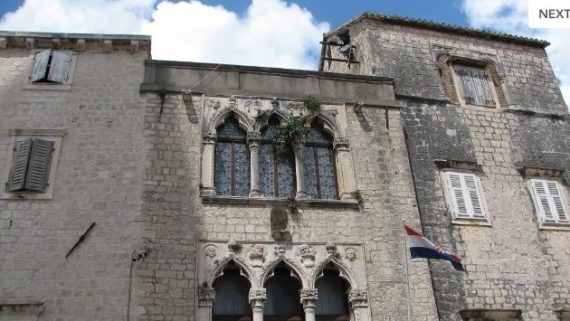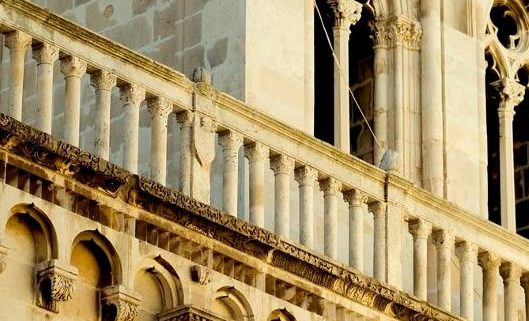Cultural monuments
In the past, the town was one of the cultural centers of Dalmatia: in the 13th century enriched with the master works of master Radovan and Ivan Lucius, who filled the town with famous sculptors, architectures and paintings. The Radovan Portal was finished in 1240, and is a unique monumental work of this great Croatian artist, of whom the inscription on the base of the lunette says he is “the best of all in this artisanship”.
The old town core has been formed between the 13th and 15th century inside defense walls that were restored by Venice in the 15th century. They also added two forts that are still preserved: Castle Kamerlengo and the Tower of Saint Marc. Castle Kamerlengo is situated in the south-west side of the island. Its present shape is in the exact state as it was in the 15th century. South of the castle is the tower of Saint Marc also from the 15th century, and between the tower and the castle there is a gloriet from the time of the French occupation. The eastern part of the town has developed around the main square with the cathedral. The western part named Pasika, was built later in the century.
The entrance into the town from the north is through the renaissance town gates from the 17th century with the sculpture of Blessed John Orsini, the patron of the town. On the main square is the cathedral from the 13th – 15th century with characteristics of both Romanesque and Gothic styles. The entrance of the cathedral holds the most valuable work of the Romanesque sculpture in Dalmatia – the portal of master Radovan from 1240.
The most beautiful objects from the treasury are embroideries, ivory Gothic triptych, and medieval illuminated codices. The sculpture of Saint Laurence and the triangular gable were added to it in the 14th century. In the cathedral there are also: the baptistery from 1464 by Andrija Alesi; the Octagonal Stone Pulpit from the 13th century; Gothic Chorus Benches; the Ciborium from the 14th century; paintings of the local and Italian masters; Gothic chapel of Saint Jerome from 1438; and the Chapel of the Blessed John Ursini, from the 15th century, by Nikola Firentinac.
 English
English Hrvatski
Hrvatski

